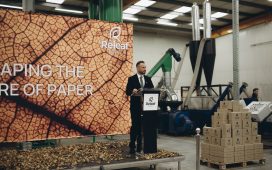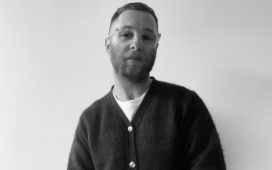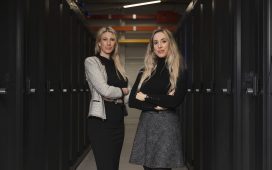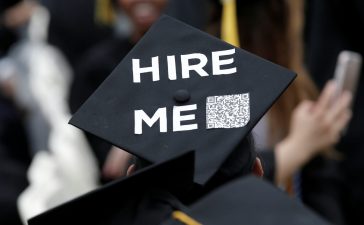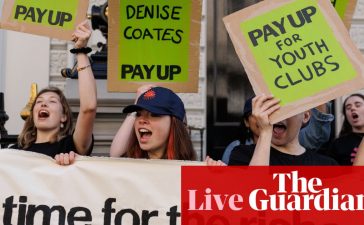In the past, gold hunters, LGBTQ+ pioneers, tech entrepreneurs, VC investors have displayed an uncommon willingness to take risks. The Golden City can seize the future again.

San Francisco police: Driver killed after Chinese Consulate crash
A car rammed into the Chinese consulate in San Francisco, coming to a stop in the lobby and ending with police shooting the driver.
It’s hardly news that San Francisco is in the grips of a “doom loop,” a term that describes the city’s apparently unbreakable spiral of empty offices and unaffordable housing. The mood is pessimistic, amplified by homelessness, drug abuse and crime. The city is struggling to find a way out, but this moment of desperation should not fill us with despair.
Since they originated about 10,000 years ago, cities have been besieged by wars, pandemics and technological change, but they have always been able to reinvent themselves. Few cities in world history have adapted like San Francisco; innovation is in its DNA.
Now, today’s crisis in the Bay Area could make room for new ideas to take hold faster than in other places. If the city seizes its moment, learning from its venture capital (VC) sector, San Francisco could also seize the future.
How homelessness hurts mental health: My mom’s suicide wasn’t a personal failure. When she needed community, the system let her down.
We need to come back together – downtown
Of course, the problems of empty offices, unaffordable housing and extreme poverty are not unique to the Golden City. The same challenges are appearing in urban areas from New York to Minneapolis. But San Francisco faces a daunting office vacancy rate of more than 30%, which is about 30 million square feet of unused space.
However, the “downtown doomers” are not thinking long term, past or future. Our recent research at MIT shows that without in-person interactions, our interpersonal networks wither. We need to come back together, one way or another, and downtown is the place to do it.
The fundamental strength of a downtown does not rest on tax revenues from commercial rents. It comes from a central location in a spot full of urban density. This suggests that today’s doom loop could bottom out on a trampoline. To bounce back, San Francisco can learn from a sector where it excels – venture capital:
- Freeing the city’s animal spirits. Austrian economist Joseph Schumpeter insisted that innovation does not come easily when established interests and systems have too much power. Instead, it emerges in moments of “creative destruction,” when an economic crash or a disruptive invention shakes up the status quo. In a similar way, the economy, long an unequal tech monoculture, must diversify beyond industries that so easily fly away. Venture capital has always excelled at accelerating creatively destructive ideas; adapting a VC mindset is the perfect decision for cities to make today.
- Experimenting at 360 degrees. “Central business districts” can no longer depend on the old mix. As in venture capital, what this moment calls for is throwing everything at the wall and seeing what sticks – mixing in more residential units, reviving restaurants and movie theaters, and experimenting with new business models of co-living and co-working.
- Starting small and temporary. VC’s model for risk management – funding many small projects, then turning up the faucet of cash for the handful that show promise – can be transplanted to empty downtowns. Light-touch, low-cost pilots – experiments in rezoning and pedestrianization, pop-up shops and temporary festivals – can tease out what works and what does not.
- Teaming up. To inject the dynamism of venture capital into urban policymaking, especially to finance uncertain bets, the government should embrace private sector partners. Tax incentives, and the promise of possible windfall profits, could coax many new actors to fill the city’s vacant buildings.
- Engaging citizens. By measuring different forms of citizen feedback, from holding traditional public meetings to measuring how people “vote with their feet” and use new spaces, the city can iteratively improve new programs. Ultimately, architects and planners can propose new designs, such as pitching new startup ideas, and let citizens exert the selective pressure.
Our churches are dying: Church should be more like a pub. The first thing is community. Acceptance. Belonging.
Reinvigorate San Francisco’s fortunes, and its morale
Of course, the analogy with venture capital has limits. “Move fast and break things” is not always the best logic for a city hall. Some large projects – new highways or sewer systems – can only be implemented at scale, and not with iterative growth cycles.
Even so, the dynamism of a VC approach, alongside coalition-building and larger-scale experiments, can be a crucial tool to reinvigorate San Francisco’s fortunes and, just as important, its morale.
Throughout history, San Francisco’s residents – gold hunters, LGBTQ+ pioneers, tech entrepreneurs and investors – have displayed an uncommon willingness to take risks and buck conventions. When all seems bleak, the Golden City has won its fortunes by attracting the bold.
Taking the long view, the myth of a doom loop and a clamor of nationwide derision, will dare San Francisco to do what it always does best: Seize the future.
Carlo Ratti directs the Senseable City Lab at the MIT Department of Urban Studies and Planning and is a co-author of “Atlas of the Senseable City.”

